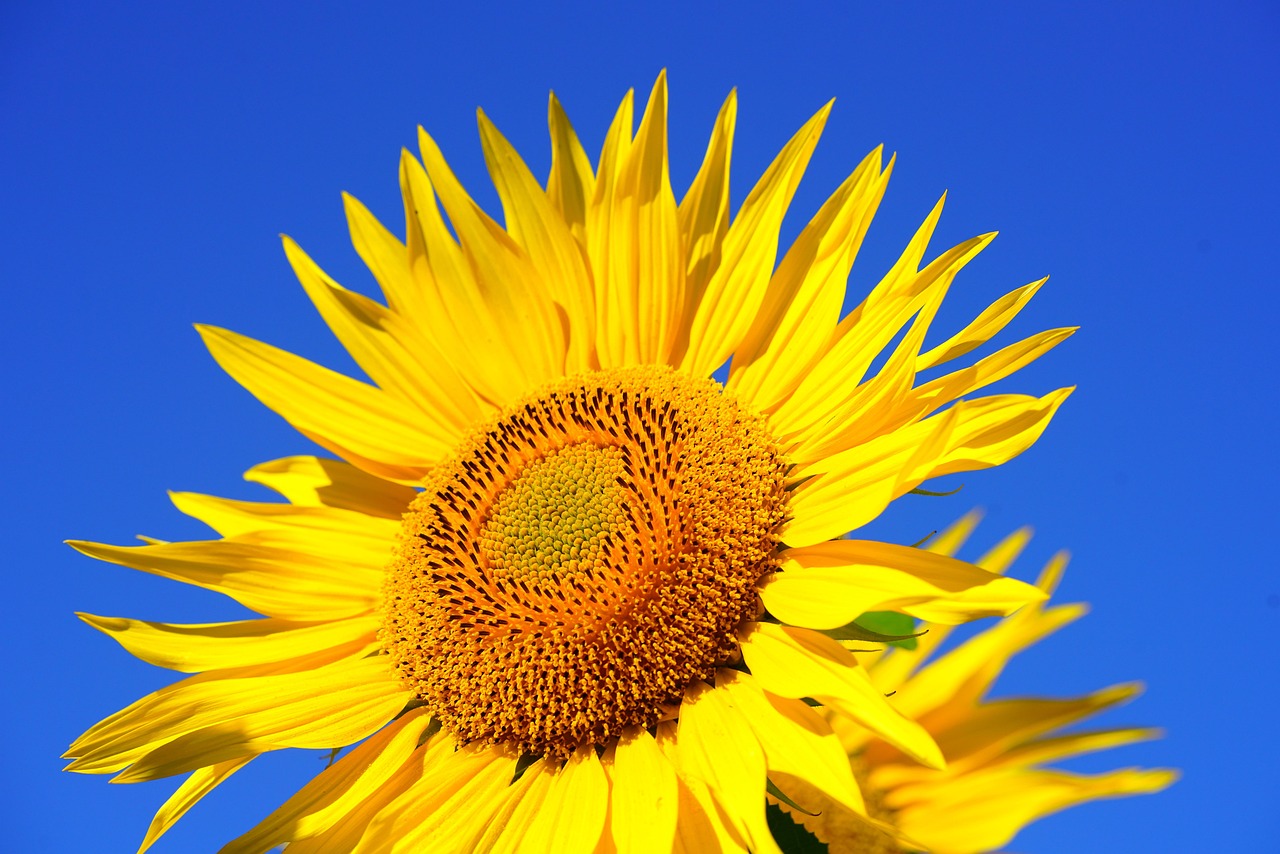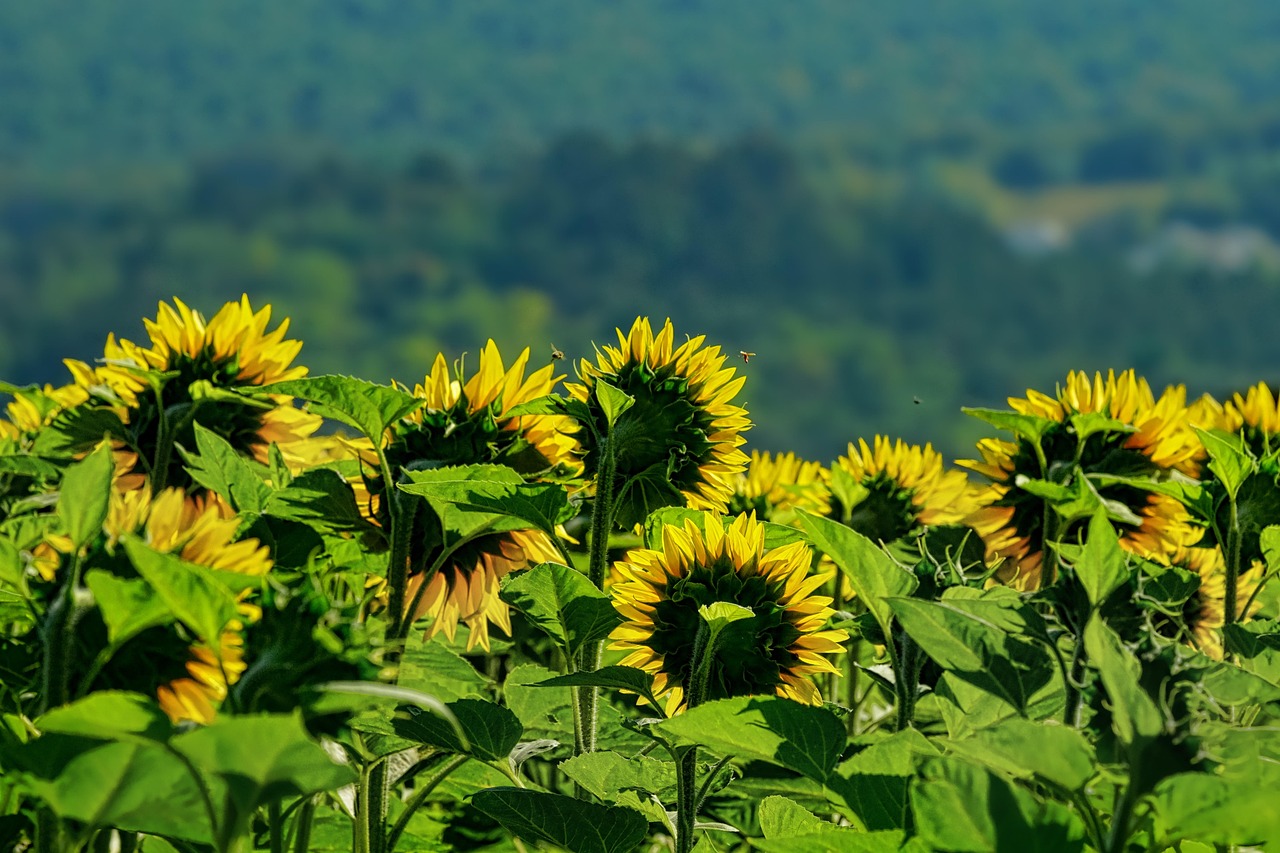Sunflower planting offers numerous benefits, such as high seed yield, vibrant aesthetics, and soil health improvement. However, it also has drawbacks, including susceptibility to pests and diseases, and the need for specific growing conditions that may not be suitable for all farmers.
Sunflowers (Helianthus annuus) are not only known for their striking appearance but also for their versatility in agriculture. These plants are cultivated across various regions due to their adaptability and the numerous products derived from them. Sunflower seeds are a popular snack and are used to produce oil, which is highly regarded for its health benefits. In addition to their economic value, sunflowers play a significant role in enhancing biodiversity and improving soil quality.

As with any agricultural endeavor, planting sunflowers comes with both advantages and disadvantages. Understanding these factors is essential for farmers and gardeners alike. This knowledge can help them make informed decisions about whether to incorporate sunflowers into their planting strategies.
Benefits of Sunflower Planting
Sunflowers provide a range of benefits that appeal to both commercial growers and home gardeners. Here are some of the key advantages:
- High Yield: Sunflowers are known for producing abundant seeds. A single sunflower head can contain up to 2,000 seeds, making them a lucrative crop.
- Soil Improvement: Sunflowers can enhance soil health by preventing erosion and promoting nutrient cycling. Their deep roots help break up compacted soil.
- Pest Management: Sunflowers can attract beneficial insects, such as pollinators and predatory bugs, which help control pest populations in the garden.
- Versatility: These plants can be grown in various climates and soils, making them suitable for different agricultural systems.
- Beautiful Blooms: Sunflowers add aesthetic value to gardens and farms, creating vibrant landscapes that can attract visitors.
In addition to these benefits, sunflowers are also used in crop rotation practices. They can help break disease cycles and improve overall farm health by diversifying the crops grown in a given area.

Drawbacks of Sunflower Planting
Despite their many advantages, sunflower planting is not without challenges. Here are some of the notable drawbacks:
- Pest and Disease Susceptibility: Sunflowers are vulnerable to various pests such as aphids, beetles, and diseases like downy mildew, which can affect yield.
- Specific Growing Conditions: Sunflowers require warm temperatures and well-drained soil. Inadequate conditions can lead to poor growth or crop failure.
- Resource Intensive: They may require significant water and nutrients, particularly during the growing season, which can be a concern in drought-prone areas.
- Short Lifespan: Sunflowers typically have a short growing season. Once they bloom and produce seeds, they die off quickly, requiring replanting each year.
Understanding these drawbacks is crucial for anyone considering sunflower planting. While the economic benefits can be significant, managing the risks associated with pests and unfavorable growing conditions is equally important.
Key Facts About Sunflowers
| Fact | Description |
|---|---|
| Origin | Sunflowers are native to North America and were domesticated by Indigenous peoples over 5,000 years ago. |
| Cultivation Area | The United States is one of the largest producers of sunflowers, particularly in states like North Dakota and South Dakota. |
| Varieties | There are several sunflower varieties, including oilseed, non-oilseed (confectionery), and ornamental types. |
| Nutritional Value | Sunflower seeds are rich in healthy fats, protein, fiber, vitamins E and B6, and minerals like magnesium and selenium. |
By weighing the benefits and drawbacks of sunflower planting, individuals can make more informed decisions about their agricultural practices. As more people seek sustainable farming methods, sunflowers may play an increasingly important role in both commercial and residential settings.

Sunflower Varieties and Their Uses
Understanding the different varieties of sunflowers can help growers choose the most suitable type for their needs. Each variety serves unique purposes, from producing oil to enhancing ornamental gardens. Below are some of the primary sunflower varieties.
- Oilseed Sunflowers: These are primarily grown for oil production. They have a high oil content and are often used in cooking and food processing.
- Confectionery Sunflowers: This variety is cultivated for its large seeds, which are typically consumed as snacks. They are popular for their taste and nutritional benefits.
- Ornamental Sunflowers: These are cultivated mainly for decorative purposes. They come in various colors and sizes, making them ideal for gardens and floral arrangements.
- Hybrid Sunflowers: These are bred for specific traits such as drought resistance or disease tolerance. They often produce higher yields compared to traditional varieties.
Each type of sunflower serves a unique purpose in agriculture and gardening, catering to different market demands. Choosing the right variety is essential for maximizing benefits.
Planting and Growing Sunflowers
Sunflowers are relatively easy to grow, making them suitable for both novice and experienced gardeners. Here are some essential tips for successful sunflower cultivation:

- Soil Preparation: Choose well-drained soil rich in organic matter. Testing soil pH is advisable, as sunflowers prefer slightly acidic to neutral conditions (pH 6.0 to 7.0).
- Seed Selection: Select high-quality seeds based on the desired variety. Ensure that seeds are free from disease and pests.
- Sowing Time: Plant sunflower seeds after the last frost date in your area. They thrive in warm weather, so aim for late spring or early summer.
- Watering: Water the plants regularly, especially during dry spells. Sunflowers require about an inch of water per week.
- Spacing: Space seeds approximately 6 inches apart. Taller varieties may need more space to grow without shading each other.
By following these guidelines, growers can ensure healthy sunflower plants that will thrive throughout the growing season.
Pest Management for Sunflowers
Pest management is crucial for maintaining sunflower health and maximizing yield. Common pests that affect sunflowers include:
- Aphids: These small insects feed on sap and can weaken plants. Control methods include introducing beneficial insects like ladybugs.
- Sunflower Beetles: These pests can cause significant damage to leaves. Handpicking or using insecticidal soap can help manage their populations.
- Cutworms: These larvae can sever young plants at the base. Preventative measures include using collars around seedlings.
- Birds: Birds often eat sunflower seeds before they can mature. Using netting or scare tactics may help protect crops.
Effective pest management strategies include regular monitoring of plants and employing integrated pest management (IPM) practices to minimize chemical use while protecting crops.
Nutritional Benefits of Sunflower Seeds
Sunflower seeds are not just tasty; they also provide numerous health benefits. Here are some key nutritional aspects:
| Nutrient | Amount per 100g |
|---|---|
| Calories | 584 |
| Total Fat | 51g |
| Saturated Fat | 4.5g |
| Protein | 21g |
| Fiber | 8.6g |
| Vitamin E | 35mg (175% DV) |
| Magnesium | 325mg (81% DV) |
The high levels of healthy fats, protein, and essential vitamins make sunflower seeds a nutritious addition to many diets. They can be enjoyed raw, roasted, or as an ingredient in various dishes.
Cultivating Sunflowers for Sustainability
Sunflowers contribute positively to sustainable agricultural practices. Their deep roots improve soil structure and help prevent erosion. Additionally, sunflowers can be used in crop rotation systems, providing an excellent break between other crops and reducing disease pressure.
The ability of sunflowers to attract pollinators enhances biodiversity on farms, benefiting not only the sunflowers themselves but also other crops in the area. As more farmers look toward sustainable practices, incorporating sunflowers could be a step toward more eco-friendly agriculture.
The combination of aesthetic value, economic benefits, and environmental contributions makes sunflowers a compelling choice for various agricultural settings.
Economic Aspects of Sunflower Planting
The economic potential of sunflower planting is significant, making it an attractive option for farmers and gardeners. Understanding the financial benefits and challenges associated with sunflower cultivation can help individuals make informed decisions. Here are key points to consider:
Market Demand
Sunflowers are in high demand due to their versatile uses. They are cultivated not only for their seeds but also for their oil and ornamental value. The following markets present opportunities for sunflower growers:
- Food Industry: Sunflower seeds are widely used as snacks, and sunflower oil is a popular cooking oil. Both have a growing market as consumers seek healthier options.
- Cosmetic Products: Sunflower oil is often used in skincare and cosmetic formulations due to its moisturizing properties.
- Animal Feed: The byproducts of sunflower oil extraction can be used as animal feed, providing additional income streams for growers.
- Ornamental Sales: Ornamental sunflowers are sought after for landscaping and floral arrangements, appealing to both homeowners and businesses.
Cost Considerations
While the potential profits from sunflower planting can be substantial, there are also costs that growers must consider. These include:
- Seed Costs: Quality seeds can be expensive, and selecting the right variety is crucial for ensuring a good yield.
- Land Preparation: Properly preparing the land involves tillage, fertilization, and weed control, which all require financial investment.
- Irrigation and Maintenance: Depending on the climate, additional resources may be needed for irrigation and ongoing maintenance throughout the growing season.
- Pest and Disease Management: Investing in pest management strategies can incur additional costs, but they are necessary for protecting the crop’s yield.
By carefully evaluating these costs against potential market returns, growers can develop a comprehensive financial plan for sunflower cultivation.
Environmental Impact of Sunflowers
Sunflowers not only contribute to agricultural productivity but also have a positive impact on the environment. Here are some environmental benefits associated with sunflower planting:
Biodiversity Support
Sunflowers attract a variety of pollinators, including bees and butterflies. This biodiversity support is essential for maintaining healthy ecosystems. Planting sunflowers can lead to:
- Increased Pollinator Populations: By providing a food source, sunflowers help sustain pollinator populations, which are critical for many crops.
- Diverse Habitats: Sunflower fields can serve as habitats for various wildlife species, promoting ecological balance.
- Improved Soil Microbial Activity: The presence of diverse plant species encourages beneficial microbial communities in the soil.
Erosion Control
The deep root systems of sunflowers help stabilize soil and prevent erosion. This is particularly important in agricultural settings where soil degradation can lead to significant loss of productivity. Benefits include:
- Soil Structure Improvement: Sunflowers enhance soil structure through their root systems, making it easier for other plants to thrive.
- Reduced Water Runoff: The foliage and roots help absorb rainfall, decreasing runoff and promoting water retention in the soil.
- Carbon Sequestration: As sunflowers grow, they capture carbon dioxide from the atmosphere, contributing to climate change mitigation efforts.
Cultural Significance of Sunflowers
Sunflowers hold cultural significance in various societies around the world. They symbolize different meanings depending on the culture, including loyalty, adoration, and warmth. Here are some aspects of their cultural relevance:
Historical Context
Sunflowers have a rich history that dates back thousands of years. They were first cultivated by Indigenous peoples in North America for food and medicinal purposes. Today, sunflowers continue to be celebrated in different ways:
- Art and Literature: Sunflowers have inspired countless artists and writers. Vincent van Gogh’s famous painting “Sunflowers” is a testament to their beauty and cultural significance.
- Cultural Festivals: Some regions hold festivals dedicated to sunflowers, celebrating their beauty and agricultural importance through parades, contests, and food.
- Culinary Traditions: In many cultures, sunflower seeds are used in traditional dishes, showcasing their versatility as a food source.
This cultural richness adds another layer of value to sunflower planting, making it more than just an agricultural endeavor; it connects people to history, art, and community traditions.
Challenges in Sunflower Cultivation
While sunflowers offer many benefits, there are also challenges that growers may face. Understanding these difficulties can help in developing effective strategies for successful cultivation. The following challenges are commonly associated with sunflower planting:
- Pest Infestation: As mentioned earlier, sunflowers can attract various pests, which can impact crop yield. Regular monitoring and the implementation of pest management techniques are crucial.
- Weather Sensitivity: Sunflowers are sensitive to extreme weather conditions, such as drought or heavy rainfall. This sensitivity can lead to poor growth or reduced yields, making it essential to select appropriate planting times and locations.
- Market Fluctuations: The market for sunflower products can be volatile, influenced by changes in consumer preferences, competition, and global supply chains. Growers must stay informed about market trends to make timely decisions.
- Labor Requirements: While sunflowers are relatively low maintenance, they still require labor for planting, maintenance, and harvesting. Availability of labor can be a concern, particularly during peak seasons.
Addressing these challenges involves careful planning, continuous education, and sometimes collaboration with agricultural experts or local cooperative extension services. By preparing for potential obstacles, growers can enhance their chances of success.
Innovations in Sunflower Farming
The agricultural sector is continuously evolving, and sunflower farming is no exception. Innovations are emerging that can improve efficiency and sustainability in sunflower cultivation. Here are some noteworthy advancements:
- Precision Agriculture: Utilizing technology such as GPS and data analytics allows farmers to optimize planting schedules, irrigation, and fertilizer application. Precision agriculture can lead to higher yields and reduced resource waste.
- Genetic Improvements: Breeding programs are focusing on developing sunflower varieties that are more resistant to pests and diseases, as well as those that can thrive in varying climatic conditions.
- Integrated Pest Management (IPM): This approach combines biological control methods with traditional pest management techniques to minimize the use of chemicals while effectively controlling pests.
- Sustainable Practices: Many farmers are adopting sustainable practices such as cover cropping and reduced tillage to enhance soil health and protect the environment while growing sunflowers.
These innovations not only help increase productivity but also promote a more sustainable approach to agriculture, aligning with the growing demand for eco-friendly farming practices.
Sunflower Planting Around the World
Sunflower cultivation is a global endeavor, with significant production occurring in various countries. Each region adds its unique cultural touch and practices to sunflower farming:
- United States: The U.S. is one of the largest producers of sunflowers, primarily in states like North Dakota and South Dakota. The country focuses on both oilseed and confectionery varieties.
- Ukraine: Known as the “breadbasket of Europe,” Ukraine is a major exporter of sunflower oil, making it a key player in the global sunflower market.
- Russia: Russia has also emerged as a leading producer of sunflowers, contributing significantly to the global supply chain of sunflower products.
- Argentina: Argentina cultivates sunflowers for both domestic consumption and export, with a focus on oil production.
This global perspective highlights how sunflowers play a role in the agricultural economies of many countries while also fostering international trade relationships.
Final Thoughts
The benefits and drawbacks of sunflower planting encompass a wide range of factors that affect growers across different regions. From their economic potential and environmental contributions to cultural significance, sunflowers have much to offer. However, challenges such as pest management, weather sensitivity, and market fluctuations must be navigated carefully.
Ultimately, successful sunflower cultivation requires a balance between leveraging their many advantages and addressing potential challenges. By staying informed about innovations in agricultural practices and market trends, growers can maximize their yields while promoting sustainable farming practices. Sunflowers not only enhance agricultural landscapes but also enrich cultural traditions worldwide, making them an important crop for both economic and ecological reasons.
The journey of sunflower planting is one that connects history with modern agricultural practices, illustrating the enduring relationship between people and the land they cultivate. As interest continues to grow in sustainable agriculture, sunflowers will likely remain a vital component of this evolving landscape.
